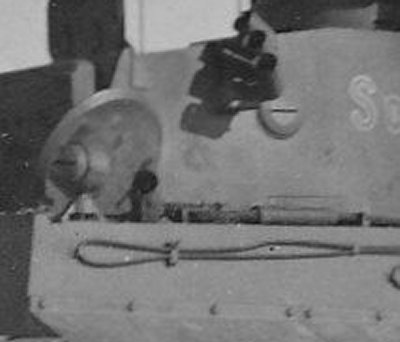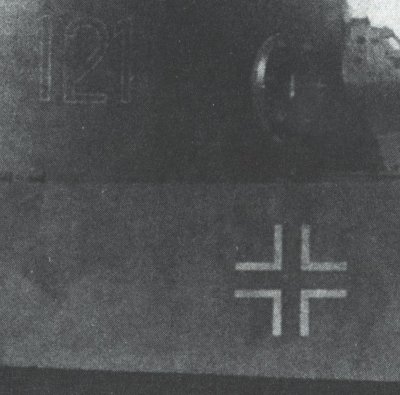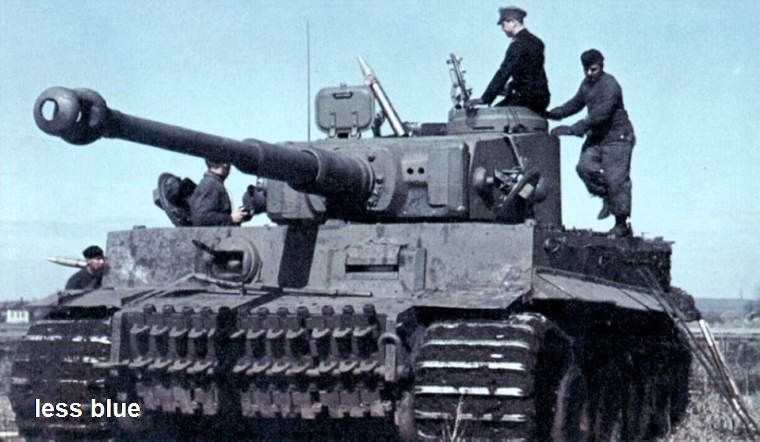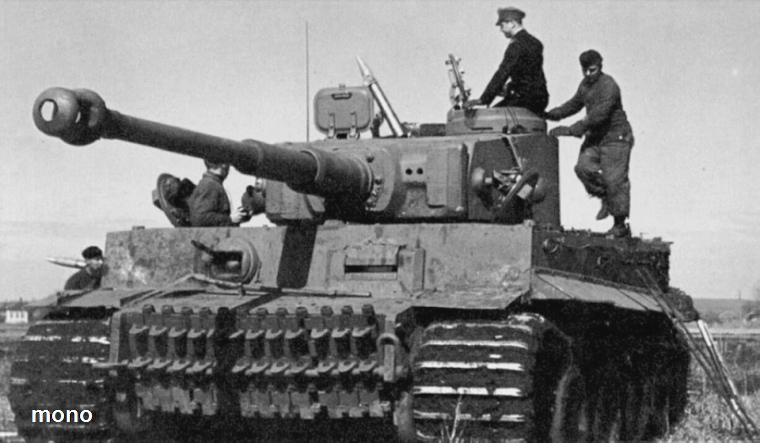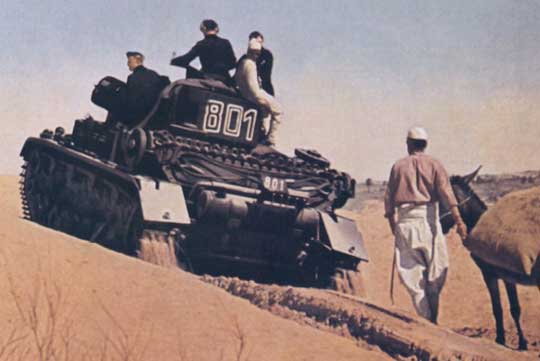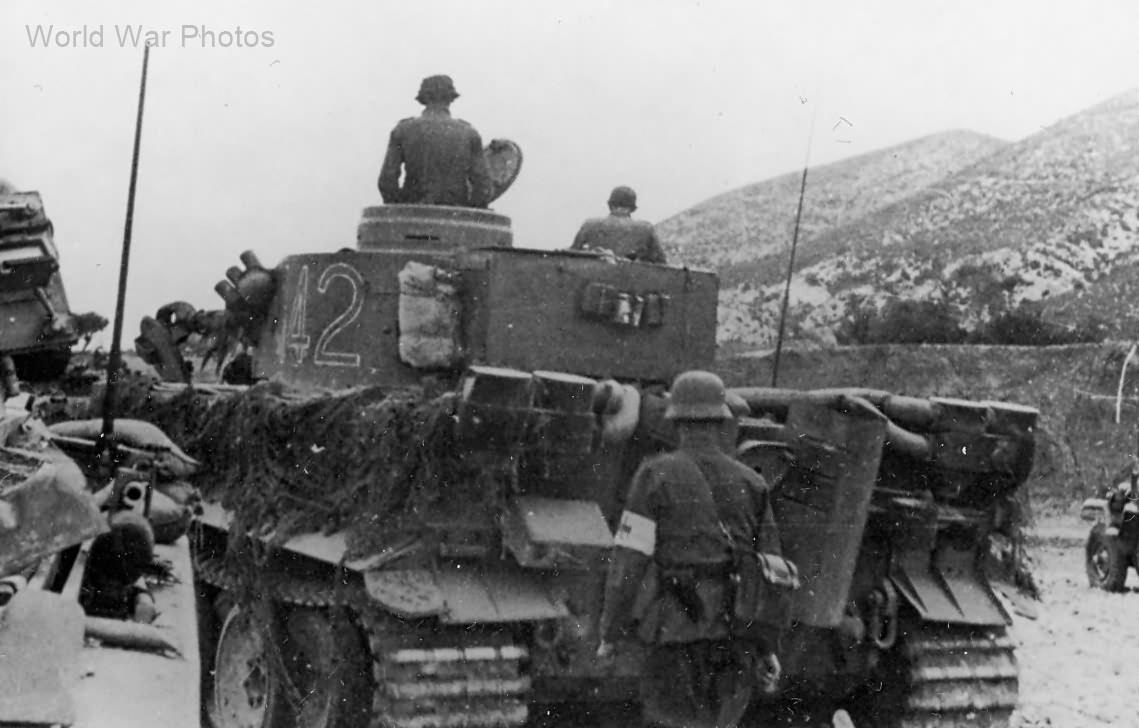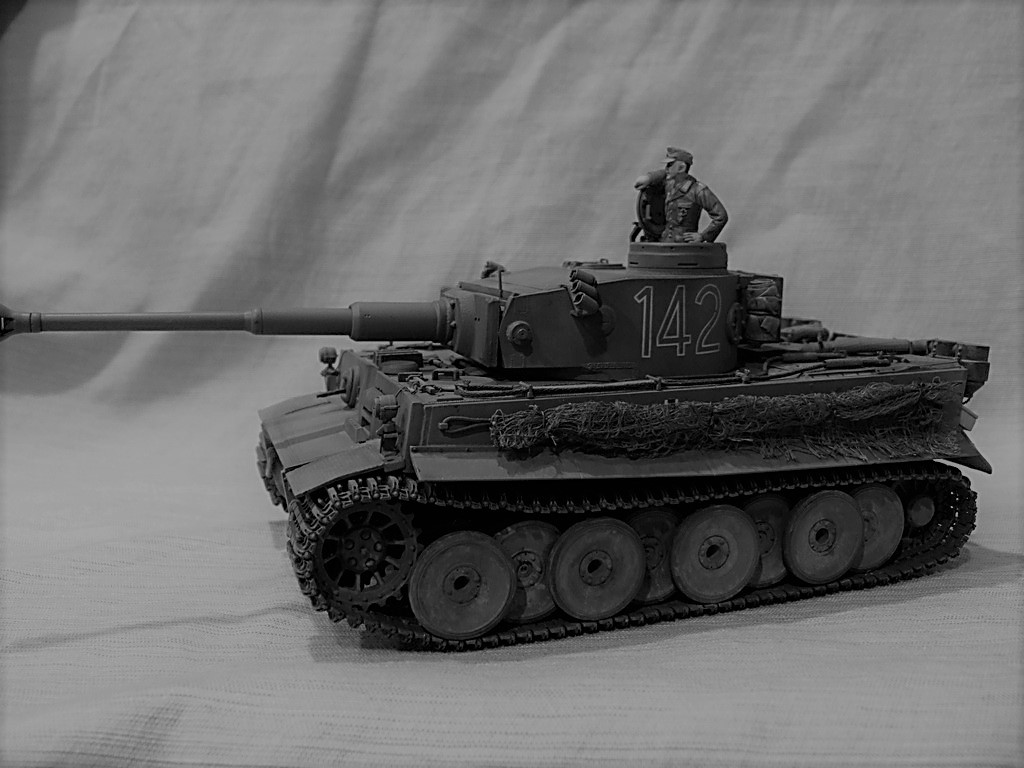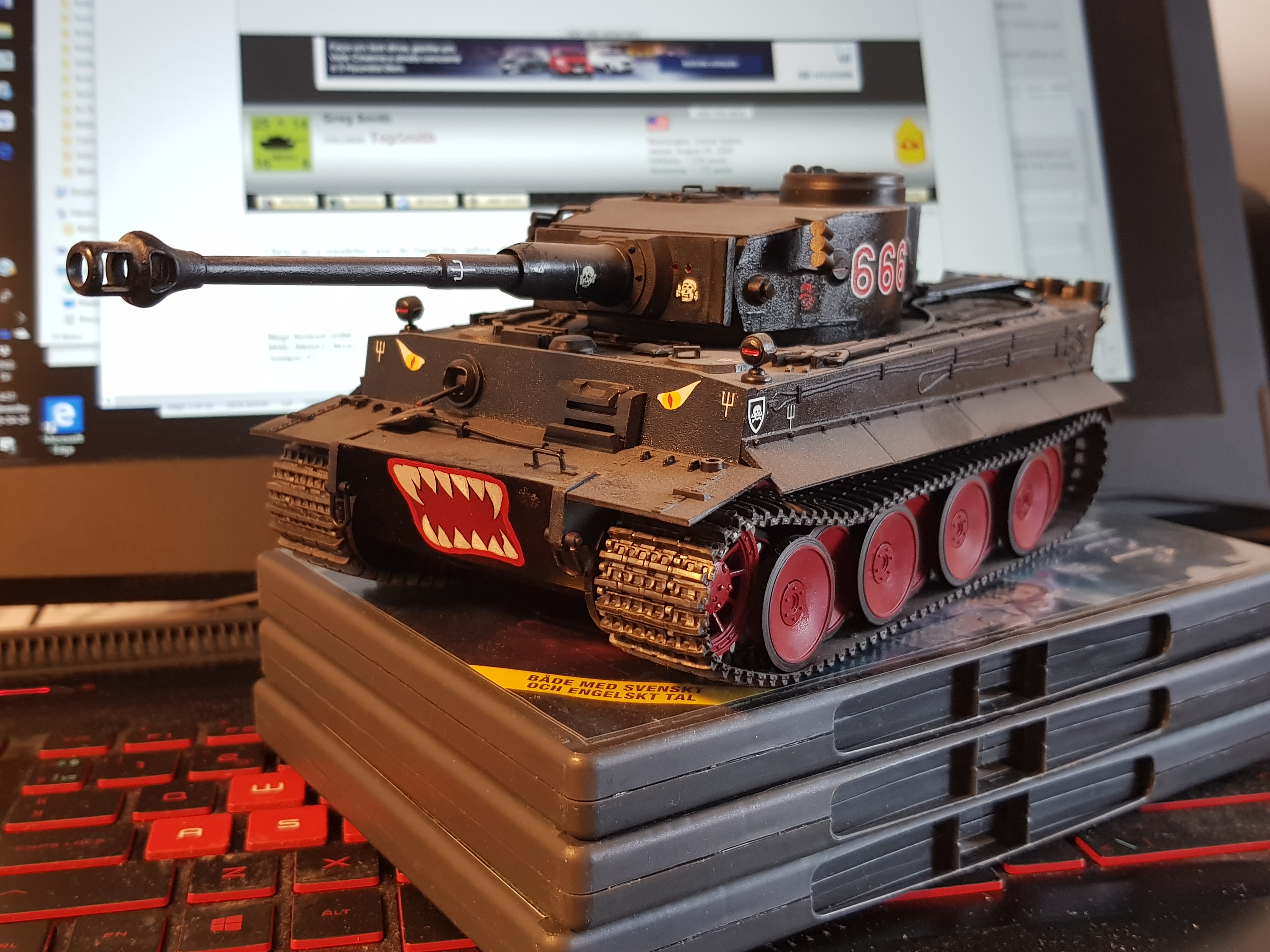Hey David
Your pic also shows that the S or something else has been painted over leaving the #40. This patch seems to be of a lighter tone, this can be identified on some other GD Tigers of that period as well. Looking at this I ask myself what did they use .... what color was at hand / available to paint over or just mud ?.
The most likely, if color, it would have been Grey at the time.
The problem here is not looking at BW pics but rather more about establishing the "surroundings" other data which might clarify the issue.
W. Schneider (his books) states these and the ss tanks were fielded in "Grey", your theses is based on a quotation in by Doyle & Jentz. I also take into account which color was applied in the factory, the procurement process, any relevant change orders, how did the Heereswaffenamt accept the Tanks, what happened next .... and so on.
So why would a commander .... knowing he was going to white-wash his tanks when leaving for Russia in a few weeks .... take his tanks out of the training process to apply a color scheme completely irrelevant for his upcoming task ? The same applies for those ss unit in question …. there is no „Tanker“ logic there.
And that would NOT be the way german Military conducted business back then and GD was not earmarked for Africa.
So why divert from the system in place ? Is there a cause... a necessity … ?
Instead we’re chasing ghost in BW pics to find any dot to prove the least obvious.
Equipment going to Africa clearly a yes .... but these few Tigers would and have been dealt with by the troops not the factory ... see the Bovington Tiger. …. according to the system in place at the time.
Germany produced all it's weapons and vehicles in "Dunkelgrau" at this time as a standard procedure. The colors were produced by BASF, BUNA, Höchst etc. .... I also pay attention to what was available in Germany regarding resources. Despite the RAL system representing an "Ideal Standard" the production and application of "Dunkelgrau" by various producers gives you various tones. Borsig's Grey for example is almost Black and so on....
Even today TAN CARC colors have different tones depending on the producer, either factory finish or rattle-cans etc.
W. Schneider and others did their research much later then Doyle & Jentz, so maybe they "found" something / info Doyle & Jentz didn't have available at their time (INet, archives), maybe color schemes wasn't even their objective then.
The the first of all …. Spielberger …. just mentions "Tropen Ausführung" .... the kit. His book clearly focusing on technical and production aspects of this tank and not color.
What didn't work for these Tigers (GD+ ss) on the Eastern Front, from a color perspective, that was just fine, and the standard, for all the rest in Russia in 1942 ?
The pressing war situation ... Stalingrad etc. ... did the Germans have the „luxury" to play around with colors ? Or is the prime existence of a weapon, the purpose, to be put to use ? That's what Doyle indicates very clearly in the article. And German was hard pressed at that specific time on the eastern Front.
Anyone who served on Tanks and AFV's will tell you one thing .... in the field your "tool" has to work … to reach your objective .... to complete the mission etc.
The color of your vehicle as a Benchmark for achieving all this is almost nonexistent in a military mindset.
Then and now .... you get the job done with what's on hand regardless of looks !
Overi In the MLynx tread there is a pic of an engine dangling over an 502s Tiger engine deck.

Davids conclusion is straight forward late type engine (produced xx.xx.xx) so the Tiger could never have been Grey.
If you second this observation then the viewer has clearly never pulled an engine from a tank in the field.
This is what I what I see:
1. The engine isn’t being pulled … it being installed … this IS the replacement engine …. why ? because it’s clean … speckless it looks like straight out of the box. So trying to prove the tanks color via engine type is not very convincing when there is a much more obvious interpretation possible …
Life expectancy of a Maybach engine was benchmarked at about 100 hours before major refurbishment needed.
2. The Balkenkreuz … the theory offered is that this unit had a habit of producing the BK in this specific fashion.
Well actually only a few did … the majority didn’t. The tanks base coat being Grey and was just taped off during application of „Dunkelgelb“ is also not an option for David. From my own experience … Tank are mechanically (+ software, electronic etc nowadays) very demanding for the crews to keep operational in the field. A tanker wound’t waste his time painting the corner edges black just to make a piece of art of the BK, (they do on barrel graffiti todays)
More likely/logical (to me) would be the Tiger was „Dunkelgrau“ was repainted „Dunkelgelb“ to the new orders (looking at summer 1943 here), the BK taped off during the process previously … and off you go back into service with a new engine (pic).
3. The track-hanger on the turret could be an upgrade -kit delivered to the front for installation / retrofitting older tanks to new standards …. the square shape and „Dunkelgrau“ original base color of the BK square might be and indication of this being an earlier Grey Tiger upgraded and repainted during one of it’s inspection intervals.
Maybe the turret was swapped … who knows ?
I believe I pointed out some other valid options here, not taken into consideration by David in his answers.
This is why I can’t support David’s theses of the Tigers in question being all in „Tropen“ scheme because the overall situation at the time the pics were taken, doesn’t really support his interpretations by just analyzing BW pics and quoting a book is not enough to prove the exemption of the rules in 1942.
If there ever will be proof one will probably find it in the copies of documents related to the procurement of the Tiger tanks, the acceptance by the Waffenamt or the Institution which payed for them ... not in BW pics.
.... modelers taking thing to literally ....
Cheers
Christopher

















